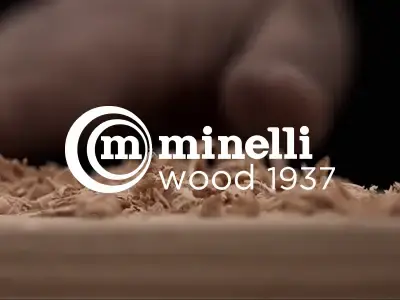When it comes to designing cooking tools, few materials can match the balance of warmth, performance and sustainability offered by wood. It adds a tactile dimension to the kitchen, providing reliable support for daily use, while also aligning with the growing demand for natural, low-impact products.
At the same time, wood carries a unique visual and emotional weight. Compared to non-stick coatings, silicone tools or moulded plastic, wood instantly elevates the perceived quality of an object, making it feel more durable, refined and personal. For brands aiming to combine function with lasting appeal, wood remains the material of choice.
Which woods are the safest for cooking tools? In this article, we will explore what makes a wooden utensil safe, which species are best for cookware and how making the right choice can enhance product integrity and brand value.
Why wood remains a top choice for cooking tools
Wood has always had a place in the kitchen. As a material, it offers a rare combination of qualities that meet both practical and emotional needs.
Firstly, it is naturally non-reactive, meaning it will not scratch pans, alter the taste of food or transfer heat in an undesirable way. Its durability makes it ideal for repeated use, and its tactile surface provides a confident, comfortable grip.
From a brand perspective, wood also tells a visual story. It adds warmth and texture to products, enhancing their perceived value without the need for decoration or excess.
Finally, it addresses growing environmental awareness. Unlike plastic or silicone, wood is biodegradable and renewable, and is often sourced with minimal processing, making it the preferred choice for brands committed to sustainability and style.
What makes a wood suitable for cooking utensils?
Not all woods perform equally well when used for food-contact tools. Beyond aesthetics, the safety and longevity of a cooking tool depend on the material's physical and chemical properties, how it responds to moisture, heat and daily use.
The key characteristics that define a safe and suitable wood for cooking tools are as follows:
- Tight grain structure: closed-grain woods absorb less moisture, which reduces the risk of bacterial growth and warping over time. This makes it more hygienic and easier to clean;
- Low porosity: less porous woods are naturally more resistant to staining, odour retention and contamination. They help tools stay clean and food-safe, even with repeated use;
- Stability under heat and humidity: cooking tools are exposed to hot pans, boiling water and varying kitchen environments. The safest woods maintain their form without cracking, swelling or softening;
- Natural oil content: some woods contain natural oils that make them more resistant to water and microbial activity, providing an additional layer of protection;
- Smooth finish and machinability: wood that can be finely shaped and polished ensures that no splinters or rough areas remain, which is essential for user comfort and safety;
- Compatibility with food-safe finishes: the wood should accept oils or coatings certified for food contact, such as mineral oil or water-based sealants;
- Sustainable sourcing and traceability: certified woods guarantee responsible forest management and enable brands to combine safety with environmental values.
Matching wood to function: how to choose by tool type

Not all wooden utensils are the same, and neither are the demands placed on them. Each tool requires specific mechanical and hygienic performance, so selecting the right wood species depends on how the product is used, washed and perceived over time.
Here’s what to consider based on the type of tool:
- Knife handles require high-density, stable woods that won’t swell or crack when exposed to moisture or temperature changes. Reliable options are, for example, maple and walnut, which balance safety with tactile appeal;
- Serving spoons, spatulas and forks need smooth, close-grained woods that resist absorption and are easy to clean. Beech and cherry offer the right balance between workability and visual neutrality;
- Whisks and graters with wooden elements must withstand mechanical stress. Durable hardwoods such as ash or elm perform well, especially when shaped into slender or jointed forms;
- Ladles and pan lids are often exposed to steam and heat, so they require thermally stable woods. Olive wood, for example, has natural resistance to moisture and a smooth finish that helps maintain hygiene;
- Even when wood is used sparingly for pastry brushes, sieves and colanders, it must be finely machined and sealed. Birch and sycamore, when properly treated, provide the necessary smoothness and hygiene;
- Cutting boards and preparation surfaces demand the most from any wood. Closed-grain species such as maple reduce the risk of splintering or microbial growth, even under heavy use.
The best types of wood for safe cooking tools
As mentioned in the previous paragraph, choosing the right type of wood and matching it correctly with the type of tool is an important part of a brand's narrative. The performance, appearance and texture of each type of wood can affect how a cooking tool is used, cleaned and perceived over time.
The following are some of the most trusted types of wood for tools that come into contact with food, chosen by leading kitchenware brands for their safety, resilience and premium appeal.
READ ALSO:
What is the best wood for a cutting board?
Maple
Maple is one of the most trusted and widely used hardwoods for food-contact applications and it's easy to see why. Thanks to its tight, uniform grain and naturally low porosity, maple creates a surface that’s less likely to trap moisture, bacteria or food particles. This makes it an inherently safe and hygienic choice for everyday cooking tools.
Its pale, neutral colour blends effortlessly into a variety of kitchen designs, ranging from traditional to minimalist, and its subtle grain pattern provides visual uniformity, an asset for brands aiming for a clean, consistent look in their product lines.
From a manufacturing perspective, maple is also highly reliable. It machines smoothly, holds fine edges and accepts food-grade oils and water-based coatings evenly. This ensures that the final product meets both safety standards and aesthetic expectations.
Furthermore, maple is readily available in FSC-certified forms, making it an environmentally responsible option that supports sustainable sourcing practices. The combination of food safety, durability and versatility makes maple a smart, scalable solution for brands developing premium kitchenware.
Beech
Thanks to its dense structure, fine grain and excellent durability, beech is a staple in the world of kitchen tools. Its natural hardness ensures long-lasting performance, and its uniform texture makes it easy to shape into precise, splinter-free forms, an ideal property for tools intended for everyday use with food.
From a safety perspective, beech performs exceptionally well. Its low porosity reduces the absorption of moisture and food residues, limiting the conditions in which bacteria can thrive. When finished with certified food-grade oils or coatings, beech becomes a reliable surface that can withstand repeated use without compromising hygiene.
Visually, beech offers a light, neutral tone with minimal variation, making it ideal for products that need to look clean, honest and well-crafted. Its understated appearance allows for subtle branding, engraving or combination with other materials, supporting design flexibility and product identity.
Beech is also widely available in certified sustainable forms, making it safe, practical and aligned with the growing demand for traceable, low-impact sourcing.
Olive
Olive wood lends cooking utensils a distinctive sensory and visual identity. Renowned for its striking veining, warm golden hues and smooth texture, it instantly conveys craftsmanship and attention to detail, qualities that are synonymous with premium kitchenware collections.
But olive wood isn’t just beautiful: it’s also ideal for use in contact with food. Naturally rich in oils, it is highly water-resistant and has a smooth texture that resists splintering. Its tight grain reduces porosity, making it less likely to absorb moisture or retain food particles, two essential hygiene and long-term use traits.
Thanks to these properties, olive wood is particularly effective when finished with light, food-safe oils that preserve its natural feel and character.
Due to its uniqueness, olive wood is often reserved for small production runs or signature items. While it may not be as scalable as maple or beech, it adds value where storytelling, individuality and premium positioning matter most. For brands seeking a safe material that enhances perceived quality, olive wood is an exceptional choice.
Case study: designing a luxury olive wood chopping board for The Cookware Company
Our collaboration with The Cookware Company, a global kitchenware leader with strong ties to the U.S. retail market, exemplifies Minelli’s ability to translate bold design concepts into functional, scalable products.
The brief involved creating an oversized cutting board with a premium finish that met strict size, budget and packaging design parameters. Olive wood, renowned for its aesthetic appeal and ecological credentials, presented several production challenges, including lengthy drying cycles, high tannin content and the requirement for precise joining.
To overcome these challenges, Minelli developed a solution involving two bonded layers of olive planks, reinforced with stainless steel hooks to ensure structural integrity. The result was visually striking and met the functional requirements for food-contact surfaces, as well as the brand’s luxury positioning.
Despite its complexity, the project was completed with full alignment between the design, engineering and production teams, proving that beautiful, high-performance wooden kitchenware can be manufactured at scale.

Unsafe woods: what to avoid when choosing cooking tools
While many types of wood are suitable for cooking tools, others clearly pose risks to hygiene and durability. Using the wrong material can result in cracking, contamination and an unsatisfactory user experience, which ultimately reflects badly on the brand.
Here are the materials to avoid when safety and performance are priorities:
- Softwoods (such as pine or cedar): these woods are more porous, absorb liquids easily and are prone to warping and splintering. They may also release resins or odours when exposed to heat;
- Reclaimed or treated wood: reclaimed wood may contain residues from previous use, such as paints, varnishes or adhesives, that are not food-safe. Treated woods often contain chemicals that are not suitable for contact with food;
- Unfinished or varnished wood with unknown coatings: while a bare surface may feel natural, it offers little protection against bacteria or moisture. On the other hand, varnishes that aren't certified for food contact can leach substances into food, particularly when exposed to heat or acidity.
Design your own wooden cooking tools with Minelli
Minelli supports kitchenware brands in transforming natural materials into custom-designed tools that reflect their identity and improve everyday usability.
If you're developing a new collection or enhancing an existing one, our collaborative process involves:
- Co-design to shape products around function, feel and brand story;
- Prototyping to fine-tune the ergonomics, proportions, and aesthetic details;
- Personalisation through engraving, finishes and packaging solutions.
Together, we can create tools that transcend utility, crafted to be seen, touched and remembered.
Learn more at wood.minelligroup.com.







